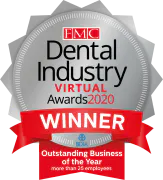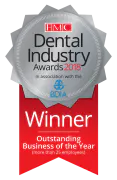Post date: 1st May 2020
First of all, it is important to be able to identify what is and what isn’t a dental emergency. Some dental concerns may require urgent attention, whereas some may be less urgent, meaning you can try some self-help remedies and wait until you can be assessed by your dentist. To help with your questions or concerns, we’ve provided a handy list of dental problems which need attention immediately, those which don’t, and some general guidance on how you can take care of yourself from home.

If there is a hole in the tooth, or a tooth has cracked causing discomfort and is now sensitive or sharp, a temporary filling can be packed into the space. These are widely available from supermarkets and pharmacies but are temporary and not to be used long-term. Your dentist may be able to supply you with a temporary kit and we advise that you should always consult with your dentist before you try this. Good cleaning with fluoride toothpaste and reducing sugar intake can help stop any potential decay getting worse. Desensitising/sensitive toothpaste like Sensodyne repair and protect can also help if you rub the toothpaste directly onto the affected area and do not rinse afterwards. Anaesthetic gels such as Orajel can also help ease pain.

Wisdom tooth pain is usually due to inflammation of the gum over the erupting tooth, which can be worsened by trauma from biting. Most flare ups can be managed with thorough home care and should settle in a few days to a week. If you have difficulty swallowing, swelling in your face or cheek, or difficulty opening your mouth, call your dentist. You may need antibiotics if you have an infection or a minor infection that is spreading.
Ensure excellent cleaning - Even if it is painful to brush, the area must be kept clean to encourage healing.
Avoid Corsodyl mouthwash – Although it may seem like a good idea, avoid using Corsodyl mouthwash for more than a few days, as use for a few weeks as it could cause staining.
Soft diet - Eating soft foods will reduce the chance of trauma from biting.
Painkillers - You can take Ibuprofen or paracetamol to reduce inflammation but ensure you follow the instructions on the packet.
If you’re feeling pain after an extraction, you should take regular painkillers for up to seven days. It is normal for pain to be at its worst on day three or four. We cannot provide antibiotics for pain after extractions unless an infection is present.
Some pink spit/oozing is normal after an extraction, but if the socket is bleeding freely, bite hard on gauze or a clean hankie for 20 minutes. If bleeding has not stopped call your dentist for further advice.
If you smoke or rinse too soon after an extraction, you risk a dry socket and this can be very painful, with regular painkillers unlikely to be effective. If this happens, you should call your dentist to seek an emergency appointment. Antibiotics will not solve this, as a dressing is needed to cover the exposed bone.
Although painful, most ulcers will heal within 7-10 days. Non healing ulcers/oral lesions present for more than three weeks should be assessed by a dentist or doctor.
Ensure excellent cleaning - The mouth must be kept clean to encourage healing and prevent more ulcers forming. Be gentle and use a soft/baby toothbrush.
Difflam (Benzydamine) spray or mouthwash - Use this as needed to treat your sore mouth.
Denture adhesives - if rubbing dentures are causing your ulcers, adhesives like Fixodent may help secure a loose denture. Any sharp edges may be very carefully removed using an emery board. It is advisable to remove dentures where possible if they’re causing trauma.
Avoid Corsodyl mouthwash – Again, we recommend you don’t use Corsodyl mouthwash for longer than a few days as this may cause staining.
We’ve put together further, comprehensive guidance on mouth ulcers here if you want to know more.
Bleeding gums are not a dental emergency as this is most commonly associated with gum disease, and will not stop until brushing improves. Brush twice a day with a fluoride toothpaste for two minutes, concentrating especially on the areas that are bleeding. Ensure that you also use floss or interdental brushes to clean between your teeth every day.
If you lose a crown, the best advice will be the personalised advice that you can get from a dentist. There are temporary repair kits but they are fiddly to use. Your dentist may be able to help by talking this through with a video link, or they may be able to advise if it is OK to leave the crown off until normal dental care resumes.
COVID Hub
Awards





